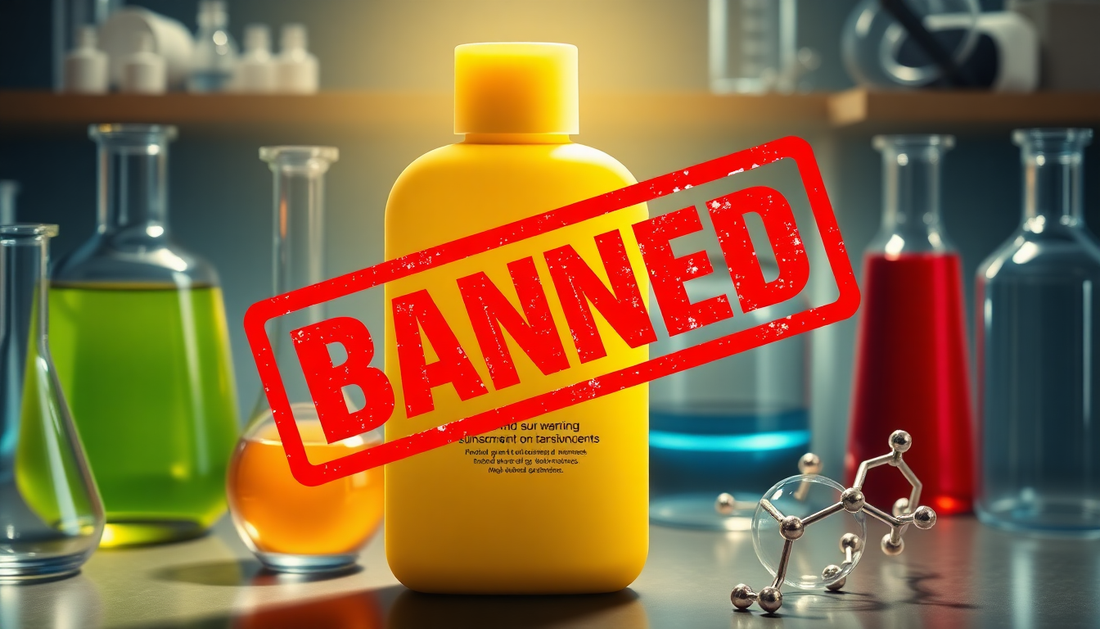
Why You Should Ditch Chemical Sunscreens for Mineral Alternatives
Share
As the weather starts to warm up, it's time to start thinking about sun protection. But have you ever stopped to consider what's actually in your sunscreen? If you're using a traditional chemical sunscreen, the answer might surprise you.
In the US, it has been a case of 'whack a mole' as research slowly catches up to how harmful chemicals in sunscreen are. Similar to what we are seeing in our food supply, some of these chemicals are already banned in other countries and are starting to be banned in certain states.
Many of the most common sunscreen ingredients, like oxybenzone, octinoxate, avobenzone, homosalate, octisalate, and octocrylene, have been linked to a variety of health and environmental concerns. Oxybenzone, for example, is a hormone disruptor that has been shown to have estrogenic effects and may contribute to coral reef bleaching. Octinoxate has also been linked to hormone disruption and is banned in parts of the world for its environmental impact.
Even some of the "inactive" ingredients in sunscreens can be problematic. Parabens, for instance, are a common preservative that has been associated with breast cancer and reproductive issues. Phthalates, which are used to help sunscreens spread more easily, have been linked to endocrine disruption and developmental problems.
The Trouble with Chemical Sunscreens
Let's take a closer look at some of the biggest offenders:
Oxybenzone
Oxybenzone is one of the most widely used UV filters in sunscreens, but it's also a hormone disruptor that has been shown to have estrogenic effects. It's been detected in the bloodstream of nearly every American, and studies have linked it to decreased sperm count in men, endometriosis in women, and even changes in birth weight. Oxybenzone has also been found to contribute to coral reef bleaching, which is why it's been banned in places like Hawaii and the U.S. Virgin Islands.
Octinoxate
Another common sunscreen ingredient, octinoxate, has also been linked to hormone disruption. It's been shown to alter thyroid function and reproductive development in animal studies. Octinoxate is also believed to be harmful to aquatic life, which is why it's been banned in parts of the world.
Avobenzone, Homosalate, Octisalate, and Octocrylene
These other chemical UV filters are also concerning. Avobenzone has been found to generate free radicals that can damage DNA, while homosalate, octisalate, and octocrylene have all been linked to hormone disruption and other health issues.
Why Mineral Sunscreens are a Better Choice
The good news is that there's a better alternative: mineral sunscreens. Unlike chemical sunscreens that absorb UV rays, mineral sunscreens work by reflecting and scattering the rays away from your skin. The active ingredients in mineral sunscreens, like zinc oxide and titanium dioxide, are generally considered safer and more environmentally friendly. Icarus uses only non-nano zinc oxide as its active ingredient, which means the particles are large enough not to be absorbed into the bloodstream. And the formula is free of parabens, phthalates, and other questionable additives.
What I love most about Icarus is that it doesn't leave that dreaded white cast that can make you look like a ghost. The formula blends seamlessly into the skin, and it's actually moisturizing and soothing, with ingredients so clean that you could eat them.
So if you're ready to ditch the chemicals and protect your skin (and the planet) with a safer alternative, I highly recommend giving Icarus a try. Your skin - and the environment - will thank you.
